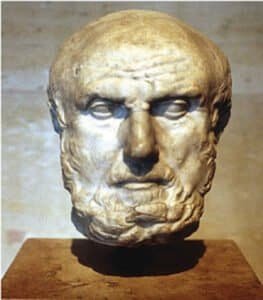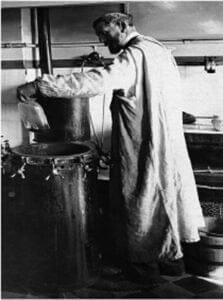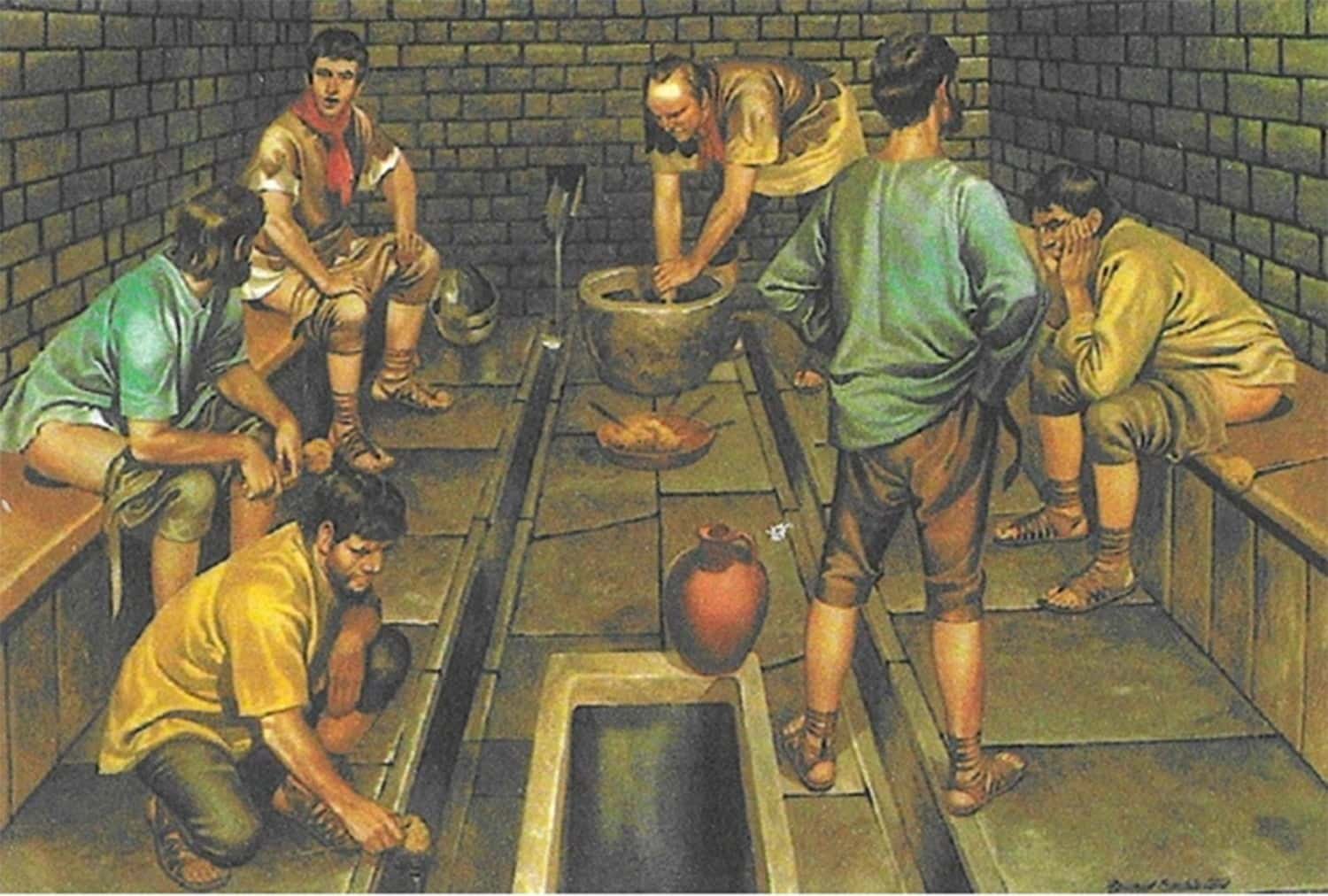Public health, a multifaceted discipline dedicated to safeguarding and enhancing the well-being of entire communities and populations, possesses a rich, multifarious history that spans centuries. This article takes an extensive look at the captivating narrative of public health, from its nascent beginnings to its contemporary prominence.
Ancient Beginnings
 Most ancient peoples of the world were clean and well-groomed, frequently for religious purposes, including, it seems, a desire to appear pure in the eyes of their gods. For instance, the Bible contains several commands and prohibitions on proper and improper behavior. Law, custom, and religion were all intertwined. For thousands of years, cultures viewed epidemics as heavenly punishments for humankind’s transgressions. However, the notion that plague is brought on by natural factors like the temperature and physical surroundings eventually emerged. The earliest effort at a logical, scientific explanation of illness causation was made during the 5th and 4th century BCE in Greece when philosophy had made significant strides. For instance, a relatively early link between malaria and marshes was made (503-403 BCE), even if it was unclear why the two were associated. The first systematic effort to establish causative connections between human diseases and the environment was made in the book Airs, Waters, and Places, which is considered to have been authored by Greek physician Hippocrates in the fifth or fourth century BCE. This book gave readers a theoretical foundation for understanding both endemic disease (a disease that persists in a specific location) and epidemic disease (a disease that affects a large number of people within a short period of time) before the new sciences of bacteriology and immunology emerged well into the 19th century.
Most ancient peoples of the world were clean and well-groomed, frequently for religious purposes, including, it seems, a desire to appear pure in the eyes of their gods. For instance, the Bible contains several commands and prohibitions on proper and improper behavior. Law, custom, and religion were all intertwined. For thousands of years, cultures viewed epidemics as heavenly punishments for humankind’s transgressions. However, the notion that plague is brought on by natural factors like the temperature and physical surroundings eventually emerged. The earliest effort at a logical, scientific explanation of illness causation was made during the 5th and 4th century BCE in Greece when philosophy had made significant strides. For instance, a relatively early link between malaria and marshes was made (503-403 BCE), even if it was unclear why the two were associated. The first systematic effort to establish causative connections between human diseases and the environment was made in the book Airs, Waters, and Places, which is considered to have been authored by Greek physician Hippocrates in the fifth or fourth century BCE. This book gave readers a theoretical foundation for understanding both endemic disease (a disease that persists in a specific location) and epidemic disease (a disease that affects a large number of people within a short period of time) before the new sciences of bacteriology and immunology emerged well into the 19th century.
The foundations of public health extend deep into the annals of history, reaching back to the very dawn of civilization. Ancient societies such as Egypt, Greece, and Rome demonstrated an early awareness of the importance of communal well-being. In Egypt, public officials were responsible for overseeing sanitation, water supply, and food safety, laying down the rudimentary pillars of public health. Similarly, the Greeks and Romans instituted basic public health measures to manage sewage, control diseases, and promote clean living.
The Middle Ages
 The Black Death (bubonic plague) of 1348 can be seen as the end of the Middle Ages in terms of sickness, which can be seen as starting with the epidemic of 542. Leprosy, bubonic plague, smallpox, TB, scabies, erysipelas, anthrax, trachoma, sweating sickness, and dance mania were among the illnesses that reached epidemic proportions (see infection). Leprosy’s initial outbreak prompted the first calls for isolating those with contagious illnesses. In the Middle Ages, and notably in the 13th and 14th centuries, this illness became a significant issue. In 1347, a plague outbreak made its way to the Mediterranean ports of southern Europe. Within three years, it had spread to all of Europe.
The Black Death (bubonic plague) of 1348 can be seen as the end of the Middle Ages in terms of sickness, which can be seen as starting with the epidemic of 542. Leprosy, bubonic plague, smallpox, TB, scabies, erysipelas, anthrax, trachoma, sweating sickness, and dance mania were among the illnesses that reached epidemic proportions (see infection). Leprosy’s initial outbreak prompted the first calls for isolating those with contagious illnesses. In the Middle Ages, and notably in the 13th and 14th centuries, this illness became a significant issue. In 1347, a plague outbreak made its way to the Mediterranean ports of southern Europe. Within three years, it had spread to all of Europe.
Public health faced a period of stagnation during the Middle Ages, marked by limited advances. Europe grappled with devastating outbreaks of deadly diseases like the Black Death, which claimed countless lives. However, the Renaissance period breathed new life into the study of science and medicine. Figures like Leonardo da Vinci and Andreas Vesalius made significant contributions to human anatomy studies, setting the stage for future medical breakthroughs.
Isolating people who had been in touch with known or suspected cases of the plague was the main strategy for fighting it. At initially, the seclusion lasted for roughly 14 days before being extended progressively to 40 days. Public officials established a system of sanitary control to fight infectious illnesses utilizing monitoring stations, isolation hospitals, and disinfection techniques as a result of the Black Death.
The creation of clean water sources, sewage and rubbish removal, and food inspection were all significant attempts to enhance cleanliness. These initiatives were especially crucial in urban areas where residents often lived in close quarters with numerous animals. Several pioneering efforts in public health were made throughout the Middle Ages, including attempts to deal with the unhygienic conditions of the cities; the development of hospitals; the provision of medical treatment and social support; and the use of quarantine to stop the spread of illness.
The Renaissance
In the 16th and 17th centuries, years of technical advancement culminated in a number of scientific discoveries. Leaders who had received an education at the time understood that maintaining the population’s health was essential to the state’s political and economic power. However, neither in England nor on the Continent were national health programs created because the government lacked the administrative capacity and competence to implement them. As a result, much like in the Middle Ages, local communities continued to tackle public health issues.
The foundations of anatomy and physiology were built by scientific discoveries in the 16th and 17th centuries. The more accurate identification of illnesses was made feasible through observation and categorization. The notion that tiny creatures may be the source of infectious illnesses had first emerged. English statistician John Graunt was one of the early innovators in public health medicine. In 1662, he released a book of statistics that included data for fatalities and occasionally reasons of death that had been collated by parish and municipal governments. Despite the data’s inevitable inaccuracy, epidemiology got off to a good start.
Changes since 1875
The early 19th-century research on silkworm infections by Italian bacteriologist Agostino Bassi paved the basis for the eventual proof that certain microorganisms are responsible for a variety of illnesses. However, certain issues remained unresolved. These included issues with varying levels of organism transmissibility and illness susceptibility in people. The identification of both human and animal carriers of infectious illnesses has shed some light on these issues.
 Louis Pasteur, a French chemist and microbiologist, German scientists Ferdinand Julius Cohn and Robert Koch, and others created techniques for isolating and describing bacteria in the last decades of the 19th century. English physician Ronald Ross discovered the mosquito as the malarial vector around this time, while English surgeon Joseph Lister established notions of antiseptic surgery. Additionally, the American researchers Walter Reed and James Carroll showed that yellow fever is brought on by a filterable virus carried by mosquitoes, while the French epidemiologist Paul-Louis Simond produced proof that plague is predominantly a rodent illness spread by fleas. As a result, early medical entomologists and bacteriologists have much to do with current public health and preventive medicine. Because of its offspring, immunology, and bacteriology also owes something else.
Louis Pasteur, a French chemist and microbiologist, German scientists Ferdinand Julius Cohn and Robert Koch, and others created techniques for isolating and describing bacteria in the last decades of the 19th century. English physician Ronald Ross discovered the mosquito as the malarial vector around this time, while English surgeon Joseph Lister established notions of antiseptic surgery. Additionally, the American researchers Walter Reed and James Carroll showed that yellow fever is brought on by a filterable virus carried by mosquitoes, while the French epidemiologist Paul-Louis Simond produced proof that plague is predominantly a rodent illness spread by fleas. As a result, early medical entomologists and bacteriologists have much to do with current public health and preventive medicine. Because of its offspring, immunology, and bacteriology also owes something else.
Pasteur invented the idea of preventative vaccinations in 1881, which sparked curiosity about the immune system’s workings. The advancement of microbiology and immunology has a significant impact on public health. Health agencies worked to enhance the environment in the 19th century in an effort to reduce communicable diseases. Progress was made toward the rational management of particular infectious illnesses when bacteriologists discovered the bacteria that cause those diseases.
The Birth of Modern Public Health
The 19th century witnessed the emergence of modern public health, catalyzed by the industrial revolution and urbanization. As cities expanded and populations grew, the need for organized public health initiatives became increasingly evident. John Snow, a British physician often hailed as the father of modern epidemiology, played a pivotal role during this era. His groundbreaking work in tracing the source of a cholera outbreak to a contaminated water pump in London served as a compelling example of how epidemiology could be employed to prevent and control diseases.
The Germ Theory of Disease
The late 19th century ushered in a paradigm shift in public health with the acceptance of the germ theory of disease. Visionary scientists like Louis Pasteur and Robert Koch made monumental contributions by identifying the causative agents of various diseases and developing vaccines. This newfound understanding of disease transmission and prevention paved the way for substantial advancements in hygiene, sanitation, and immunization, profoundly altering the course of public health.
Public Health in the 20th Century
The 20th century marked an era of unparalleled progress in public health. The establishment of the World Health Organization (WHO) in 1948 by the United Nations signaled a global commitment to improving public health on an international scale. Mass vaccination programs, the development of antibiotics, and the implementation of public health campaigns against diseases like smallpox and polio led to significant reductions in morbidity and mortality worldwide.
Challenges and Triumphs
While public health made enormous strides, it also confronted formidable challenges. The emergence of new diseases such as HIV/AIDS in the late 20th century underscored the need for sustained vigilance and innovation. Public health efforts expanded to encompass not only infectious diseases but also chronic diseases, mental health, and environmental health concerns.
The 21st Century and Beyond
In the 21st century, public health has continued its evolution. The rapid globalization of trade and travel has amplified the complexity of disease control and prevention. The COVID-19 pandemic, which emerged in 2019, served as a stark reminder of the critical role of public health in safeguarding global well-being.
Today, public health professionals employ cutting-edge technologies, data analytics, and interdisciplinary approaches to address multifaceted health challenges. The field has expanded beyond infectious diseases to encompass a broader spectrum of health determinants, including social, economic, and environmental factors.
Epidemiology and Disease Control
One of the cornerstones of public health is epidemiology, the study of patterns, causes, and effects of diseases in populations. Epidemiologists gather and analyze data to understand the spread of diseases and develop strategies for control and prevention. The discipline has evolved significantly over the years, with advancements in statistical methods, data collection, and technology enhancing our ability to track and respond to outbreaks.
The Sanitation Revolution
Sanitation has played a pivotal role in the history of public health. In the 19th century, as cities grew larger and more crowded, poor sanitation led to outbreaks of waterborne diseases like cholera and typhoid. Visionaries like Edwin Chadwick in England and George Waring in the United States spearheaded efforts to improve sanitation infrastructure, including the development of sewage systems and the construction of clean water supplies. These initiatives had a profound impact on reducing the spread of diseases and improving overall public health.
The Rise of Vaccination
Vaccination is one of the most significant achievements in the history of public health. The development of vaccines against diseases like smallpox, polio, and measles has saved countless lives and prevented untold suffering. The widespread adoption of vaccination programs in the 20th century led to the eradication of smallpox and substantial reductions in other vaccine-preventable diseases. Today, vaccines continue to be a critical tool in public health efforts to control and prevent infectious diseases.
The Social Determinants of Health
In recent decades, public health has expanded its focus to address the social determinants of health. It is now widely recognized that factors such as income, education, housing, and access to healthcare have a profound impact on health outcomes. Efforts to reduce health disparities and promote health equity have become central to the field of public health. Initiatives aimed at improving access to healthcare, reducing poverty, and addressing systemic inequalities are now integral components of public health practice.
Environmental Health
Environmental health is another critical aspect of public health. The 20th century saw a growing awareness of the impact of environmental factors on health. Issues such as air and water pollution, toxic chemicals, and climate change became pressing concerns. Public health professionals now work to identify and mitigate environmental health risks and promote sustainability to protect both current and future generations.
Conclusion
The history of public health is a testament to human ingenuity and the tireless efforts of individuals and organizations dedicated to improving the health and well-being of communities and populations. From its ancient origins to its modern-day prominence, public health has continuously adapted to meet the ever-changing health challenges of society. As we move forward, it is essential to recognize the importance of public health and continue to invest in its advancement to ensure a healthier and more prosperous future for all. The lessons of the past inform our actions in the present, guiding us toward a future where public health remains a cornerstone of a thriving society.


